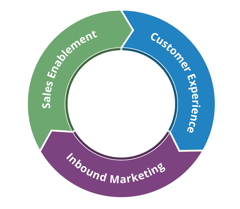Analyzing and distributing customer satisfaction data is paramount for businesses striving for excellence. This data provides insightful metrics, revealing customers' perceptions, preferences, and pain points. By understanding their feedback, businesses can tailor products, services, and experiences to meet evolving demands. Distributing this information across departments ensures alignment, fostering a cohesive strategy towards customer-centricity. Sharing results also boosts employee engagement, empowering them to take proactive actions. This instills trust among customers as they witness their feedback being valued and implemented. And leveraging this data drives improvements, fosters loyalty, and solidifies a company's competitive edge in the marketplace.
Analyzing Customer Satisfaction Data:
If you’re using customer surveys regularly, you probably have a great deal of information that you can use to improve the customer process. Net Promoter Score, or NPS, effectively measures customer happiness at a high level. NPS is a simple 1 - 10 rating scale that measures the likelihood that your customers will promote your product or service to their friends, family, and colleagues. This single, all-encompassing measurement will provide general data regarding customer happiness. From there, you can determine if you need to contact the customer to ask more in-depth questions about their experience with your brand. You can also consider sending more in-depth surveys to get information on customer satisfaction and areas for improvement. You can use tools like HubSpot or SurveyMonkey to quickly implement these surveys, gather feedback, and make immediate changes.
It's critical to ensure you are regularly analyzing your survey results. This will allow you to determine if there is a pattern or trend so you can take the necessary steps to resolve any issues. It’s all about using and analyzing this data to improve your customer journey. Customer experience data analysis is essential to improve your customer experience continually. You can do this through reports and dashboards using digital tools and even have these emailed to you daily or weekly to ensure you stay updated on the latest feedback from your customers.
Distributing Customer Satisfaction Data Quickly:
If you want to ensure your customers are happy, quickly address their needs. Customers expect a fast follow-up. Providing the survey and NPS data to the appropriate teams and individuals increases the resolution time and keeps the customer happy. For example, if you are a Software-as-a-Service organization with a customer experiencing an issue with their software, they will likely file a help ticket through your customer service ticketing tool. You will have a happy customer if you can address that issue in 60 minutes or less. This customer is going to value the responsiveness and prompt attention. A satisfied customer will likely become a brand promoter. Alternatively, if it takes days or weeks to receive a response, this customer will likely find another solution to meet their needs. This unhappy customer will likely become a brand detractor.
When you send customer surveys, if a customer gives you very high scores and is happy with your product or service, distribute that data to the account manager and your leadership teams. That kind of feedback will keep your internal team engaged. As a next step, an internal team member can contact the customer and thank them for their valued feedback. Alternatively, suppose you receive a negative response to your survey. In that case, it’s essential to pass that information to the internal individuals who can quickly change that negative customer experience into a positive one.
Gathering customer data is the first step. The next step is to analyze the data and distribute the information to your team quickly and efficiently. By doing this, your team will see immediate areas of opportunity in addition to things that are going well and can be replicated. Your customers will also start to see that you quickly respond to needs to improve their experience with your organization.
Are you looking for ways to optimize your inbound strategy? The "book "Mastering Inbound Marketing: Your Complete Guide to Building a Results-Driven Inbound Strategy," written by Elyse Flynn Meyer, Owner & Founder of Prism Global Marketing Solutions, covers every aspect of the inbound marketing methodology, including the revenue generation trifecta of marketing, sales, and the customer experience. Check out the book to see how to most efficiently and effectively develop, implement, and maintain your inbound strategy.


__Square.png?width=250&height=250&name=Marketing_Hub_(1)__Square.png)




.png?width=250&name=diamond-badge-color%20(1).png)
